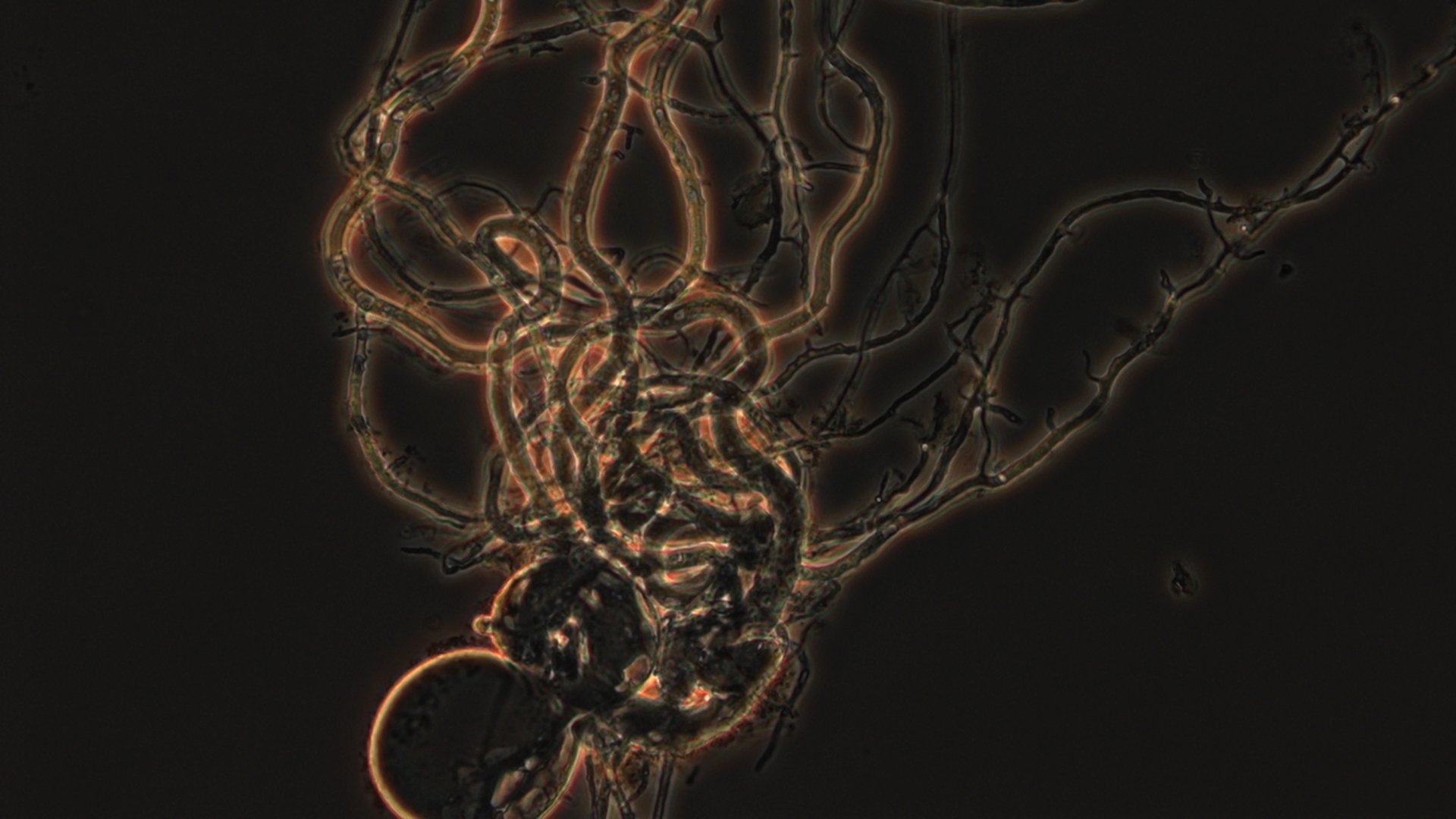Neocallimastix frontalis is an anaerobic fungus that lives in the rumen, the largest of the non-acidic stomach compartments of ruminant animals. Neocallimastix produces enzymes that break down plant fibers from the animal feed. Neocallimastix frontalis lives without oxygen and possesses hydrogenosomes that provide energy without needing oxygen.
Neocallimastix frontalis is an anaerobic fungus that lives in the rumen, the largest of the non-acidic stomach compartments of ruminant animals. Neocallimastix produces enzymes that break down plant fibers from the animal feed. Neocallimastix frontalis lives without oxygen and possesses hydrogenosomes that provide energy without needing oxygen.
Digesting plant material
Fibrous plant material is mainly composed of large structural molecules, like cellulose and hemicellulose. Plant eating mammals need to use their gut microbes to digest these molecules. Anaerobic fungi, like Neocallimastix frontalis, use invasive growth and enzymes to breakdown the plant structure.First, a zoospore of the fungus attaches itself to plant material, like a piece of hay. After attaching, rhizoids begin to grow. These rhizoids penetrate the plant material, including the rigid cell walls . Simultaneously, the fungus produces enzymes that help to break down the structural molecules. This enzymatic breakdown releases nutrients for the fungus, and in turn the fungus releases acetate, a source of energy for the mammal.
Anaerobic fungi are very advantageous to ruminant animals. They breakdown plant barriers other rumen microbes cannot, and make it easier for bacteria to colonize the plant material. This improves the digestion of the plant material, which means more energy and nutrients are generated for the ruminant animal from their food.
Moving zoospores
Anaerobic fungi can move during one part of their life cycle. The zoospores of Neocallimastix frontalis move using multiple hair-like structures called flagella. The zoospores move in the direction of plant material by sensing the presence of certain substances, and they then attach themselves to it. After attachment, the zoospore forms a cyst that germinates after a while. Root-like rhizoids then develop from the cyst, and penetrate the plant material. The enzymes of the fungus also break up the plant material at the same time. The fungus absorbs the released nutrients and grows, and from the rhizoid a sporangium develops. In the sporangium, new zoospores begin to develop. When the sporangium matures, it releases the zoospores that then search for new plant material to use.
Biotechnological applications
In the future, anaerobic fungi may be used for biotechnological applications more often. At the moment, cultivating these fungi is still difficult and expensive as they are sensitive to oxygen and need to be kept warm. Current interest is mainly focused on exploiting their powerful plant degrading enzymes. A possible future application is the use of live anaerobic fungi as a supplement for ruminant animals. Research shows that the supplement improves a cows feed intake, growth and milk production. Anaerobic fungi can also digest fibers outside the body of plant-eating animals. In a suitable environment, the fungi can be used to help convert waste plant material into valuable products such as biofuel and biogas.
Photo: Dr. A.M. Vos, Industrial Microbiology, TU Delft

